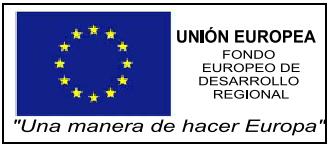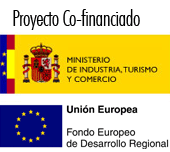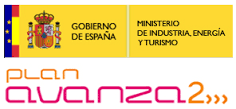2016
Proyecto CARMEN ("Coding and Signal Processing for Emerging Wireless Communication and Sensor Networks")- Funding Entity: Gobierno de España. Plan Estatal de Investigación Científica y Técnica y de Innovación 2013-2016. Programa Estatal de Investigación, Desarrollo e Innovación Orientada a los Retos de la Sociedad.
- Beginning: December, 2016.
- End: December, 2019.
- Main Researcher: Luis Castedo, José A. García Naya.
- Participating Entities: Universidad de A Coruña (coordinator), Universidad de Cantabria, Centro de Estudios e Investigaciones Tecnológicas de Guipúzcoa (CEIT) and Universidad Politécnica de Cataluña.
- Official Website: wiki.gtec.udc.es/projects/CARMEN
  
2013
Proyecto RACHEL("Radio Access TeCHniques for HEterogeneous WireLess Networks")
- Funding Entity: Gobierno de España. Plan Estatal de Investigación Científica y Técnica y de Innovación 2013-2016. Programa Estatal de Investigación, Desarrollo e Innovación Orientada a los Retos de la Sociedad.
- Beginning: January, 2014.
- End: December, 2017.
- Main Researcher: Luis Castedo.
- Participating
Entities: Universidad de A Coruña (coordinator), Universidad de Cantabria, Centro de Estudios e Investigaciones Tecnológicas de Guipúzcoa (CEIT) and Universidad de Valencia.
 
2011
Proyecto TECRAIL("Tecnologías de comunicación radio para la conducción automática y el control ferroviario")
- Funding Entity: Ministerio de Ciencia e Innovación. Subprograma INNPACTO.
- Beginning: October, 2011.
- End: September, 2014.
- Main Researcher: Luis Castedo.
- Participating Entities: Alcatel-Lucent (coordinator), ADIF, AT4 wireless, Metro de Madrid, Universidad de Málaga, Universidad de A Coruña and Universidad Politécnica de Madrid.
- Oficial Website: http://tecrail.lcc.uma.es/
 
2010
Proyecto MISCOM("Marketing Inteligente en Superficies COMerciales")
- Funding Entity: Ministerio de Ciencia e Innovación. Subprograma INNPACTO.
- Beginning: September, 2010.
- End: August, 2012.
- Main Researcher: Carlos J. Escudero Cascón.
- Participating Entities: Creativ Innovando en Soluciones IT (coordinator), Nomasystems S.L., Alimerka S.A., Instituto Tecnológico de Galicia and Universidad de A Coruña.
- Official Website: miscom.itg.es
 
Proyecto COSIMA ("COoperative and COgnitive Strategies for Interference MAnagement in wireless communication networks")
- Funding Entity: Ministerio de Ciencia e Innovación.
- Beginning: 2010
- End: 2013
- Main Researcher: Luis Castedo Ribas
- Participating Researchers: Carlos Escudero, Adriana Dapena, Miguel González López, Francisco J. Vázquez Araújo, Paula Castro Castro, Julio Claudio Brégains, Daniel Iglesia Iglesias, José Antonio García Naya, Héctor José Pérez Iglesias, Tiago Fernández Caramés, Markus Rupp, Lucía López González.
- Participating Entities: Universidad de A Coruña (coordinator), Universidad de Cantabria, Centro de Estudios e Investigaciones Tecnológicas de Guipúzcoa y Universidad de Valencia.

Acción Integrada con Austria ("Acción Integrada de Investigación Científica y Tecnológica entre España y Austria")
- Funding Entity: Ministerio de Ciencia e Innovación.
- Beginning: January 1st, 2009
- End: December 31st, 2011
- Main Researcher: Luis Castedo Ribas
- Participating Researchers: Paula Castro Castro, José A. García Naya, Miguel González López, Javier Rodas González.
- Participating Entities: Universidad de A Coruña y Technische Universität Wien.

2009
Proyecto m:Vía 2009
- Funding Entity: Ministerio de Industria, Turismo y Comercio (subprograma Avanza I+D).
- Beginning: April, 2009
- End: March, 2010
- Main Researcher: Luis Castedo Ribas
- Participating Entities: Telefónica I+D (coordinador), Robotiker-Tecnalia, GOWEX, Moviquity, Quobis Networks, UDC, CTTC, Telvent, AT4Wireless, Fundación CTIC, Tempos21, Telefónica Móviles, ATOS Origin.
- Description: Continuation of the project m: Via granted in 2008.
- Official Website: www.mvia.es

2008
Proyecto COMONSENS("Foundations and Methodologies for Future Communication and Sensor Networks")
- Funding Entity: Ministerio de Industria, Turismo y Comercio (Subprograma CONSOLIDER-INGENIO 2010).
- Beginning: December 15th, 2008
- End: December 14th, 2012
- Main Researcher: Luis Castedo Ribas
- Participating Entities: Universidad Politécnica de Cataluña (coordinator), Universidad de A Coruña, Universidad Politécnica de Madrid, Universidad Carlos III de Madrid, Centro de Estudios e Investigaciones Tecnológicas de Guipúzcoa, Universidad de Cantabria, Universidad de Sevilla, Universidad de Valencia Estudios Generales, Universidad de Vigo, Universidad Pompeu Fabra.
- Description: COMONSENS is one of the 12 projects selected in 2008 by CONSOLIDER-INGENIO 2010 Program sponsored by the "Ministerio de Ciencia e Innovación" of the Spanish Government. COMONSENS is a five-year project that integrates 67 researchers from 10 different research institutions in Spain and is coordinated by Universitat Politècnica de Catalunya (UPC). The objectives of the project include development of theoretical tools, algorithmic design, and testbed evaluation, combining disciplines such as Information Theory, Signal Processing and Network Theory with the aim of advancing the state of the art in communication and sensor networks.
- Official Website: www.comonsens.org
 
Proyecto TECOMVEH ("TEcnologías de COMunicaciones en movilidad y VEHiculares")
- Funding Entity: Ministerio de Industria, Turismo y Comercio.
- Beginning: July, 2008
- End: March, 2009
- Main Researcher: Miguél González López
- Participating Entities: GOWEX (coordinator), Quobis Networks, Albentia, Nomasystems, Universidade de Vigo, ITG, Universidad Rey Juan Carlos, Fundación FITSA, UDC.
- Description: TECOMVEH researchs new communications systems and services based on mobile communications and vehicular environments. The research focuses on three main levels: the basic technologies, engineering and service test scenarios that validate the devolopments made.
- Official Website: www.tecomveh.es

Proyecto m:Vía
- Funding Entity: Ministerio de Industria, Turismo y Comercio.
- Beginning: April, 2008
- End: March, 2009
- Main Researcher: Luis Castedo Ribas
- Participating Entities: Telefónica I+D (coordinator), Robotiker-Tecnalia, GOWEX, Moviquity, Quobis Networks, UDC.
- Description: m:Vía tries to increase the objectives from the perspective of communications using the networks and mobile or wireless technologies, for road safety, providing added value as information, vehicle support, comfort and traffic optimization. In short, m:Vía wants to achieve knowledge and technology to improve the road transport, turning the tracks and vehicles in an intelligent environment.
- Official Website: www.mvia.es
 
Proyecto PIRAmIDE ("Personalizable Interactions with Resources on AMI-Enabled Mobile Dynamic Environments")
- Funding Entity: Ministerio de Industria, Turismo y Comercio.
- Beginning: September, 2008
- End: December, 2010
- Main Researcher: Carlos J. Escudero Cascón
- Participating Entities: Treelogic, ONCE-CIDAT, UPM, TID, Siemens, Abama, AECOC, AIICPA, Inixia, Agotek, Atos Origin, URJC, Nomasystems, Servinform, UPCT and UDC.
- Description: The objective of this project is to analyze, define, implement and exploit the capabilities of mobile devices such as sensors and tools for capturing information and services associated with the objects that we interact daily.
- Official Website: www.piramidepse.com
  
2007
Proyecto MULTIMIMO ("Tecnologías MIMO en redes inalámbricas multiterminal")
- Funding Entity: Ministerio de Educación y Ciencia.
- Beginning: October 1st, 2007
- End: September 30th, 2010
- Main Researcher: Luis Castedo Ribas
- Participating Entities: Universidad de A Coruña (coordinator), Universidad de Cantabria, Centro de Estudios e Investigaciones Tecnológicas de Guipúzcoa (CEIT) and Universidad de Mondragón.
- Description: During the following years, the performance of wireless networks in terms of data rate, delay, cosumption, cost and coverage has to increase considerably if we wish to successfully support the emerging applications. One of the most promising research lines towards this aim is the incorporation of MIMO (Multiple Input Multiple Output) technologies into the wireless networks. MIMO technologies make use of several antennas at both transmission and reception to increase the data rate and to combat hostilities in the radio channel. Up to date, most research work on MIMO technologies focuses on point-to-point communications. The main novelty of this project is the consideration of more complex scenarios, but more realistic, that contain multiple terminals. In these scenarios the terminals share the available time, frequency and space resources. Several information theory studies demonstrate that the capacity of multiterminal channels is greater when superimposing the resources rather than distributing them in an orthogonal fashion. However, signaling along channels with superimposed resources is more difficult and can only be achieved by resorting to sophisticated signal processing and coding techniques. The aim of this project is the development of novel signaling schemes that deliver on the full range of multiplexing, diversity and directivity gains inherent to the MIMO multiterminal networks. The project also considers the assessment of the developed signaling techniques in realistic scenarios. Towards this aim, we propose the construction of six terminal nodes equipped with MIMO air interfaces, three nodes with low cost and performance and another three nodes with better performance but more expensive. With these nodes, we will be able to design a wide variety of multiterminal scenarios with different characteristics: multiple access channels, boradcast channels, channels with limited feedback, relay channels, …

2006
Proyecto m:Ciudad
- Funding Entity: Ministerio de Industria, Turismo y Comercio.
- Beginning: July, 2006
- End: December, 2007
- Main researcher: Carlos J. Escudero Cascón
- Participating Entities: Telefónica móviles, Fundación Robotiker, Atos Origin SAE., APIF MOVIQUITY SA, CTTC, Univ. Carlos III de Madrid, UDC, Univ. Granada, Univ. Murcia, Instalaciones Inabensa SA., Centro de Tecnología de las comunicaciones SA., Univ. Cantabria, Univ. Politécnica de Cartagena, Univ. Vigo, TB-Solutions advanced technologies SL., Iber WIFI exchange SL.
- Description: The objective of this project is the research in mobile communications technology to enable mobility and ubiquity in the provision of services currently provided by other channels. It proposes to move towards a change in the current paradigm, or model the Internet, the ubiquitous model, in wich the services, content and information are provided with safe, personalized, on any medium and any device.

2004
Proyecto MIMESIS ("Desarrollo y demostración hardware de nuevas tecnologías de transmisión para sistemas MIMO")
- Funding Entity: Ministerio de Educación y Ciencia.
- Beginning: December 13rd, 2004
- End: December 12nd, 2007
- Main Researcher: Luis Castedo Ribas
- Participating Entities: Universidad de A Coruña, Universidad de Cantabria, Universidad de Sevilla and Centro de Estudios e Investigaciones Tecnológicas de Guipúzcoa (CEIT).
- Description: The utilization of multiple antennas both in transmission and reception, also known as Multiple Input Multiple Output (MIMO) transmission systems, has recently revealed as one of the most promising technologies to achieve radio communication interfaces with a high spectral efficiency. The key point in this technology relies in the exploitation of the MIMO channels spatial diversity that arises from the physical separation between radiating elements both in transmission and reception. The objective of the present project is the investigation of new trechniques for signal processing and space-time coding suitable for MIMO channels that will enable us to approximate, as much as possible, to the limits predicted by the information theory. More specifically, we will address problems such as channel estimation, equalization, synchronization, interference cancellation, space time coding, source-channel coding and adaptivity at transmission, among others. Investigations will not be limited at a theoretical level. An important part of the project will be devoted to the construction of a hardware demonstrator prototype that will enable us to evaluate the developed algorithms in realistic scenarios. Both the signal generation and the subsequent processing of the base band signals will be realized off-line using standard simulation tools (e.g. Matlab). The interface between the signal processing and coding modules and the RF subsystems is a memory that reads (writes) in real time. The advantage of this scheme is the large versatility of the platform since all the transmission and reception base band operations will be done by means of software libraries that are easy to update and improve. In the project we will also consider the real time implementation of the most promising techniques to be used in WLAN applications.

|